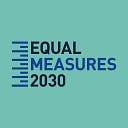Lessons from Davos — making gender equality ‘everyone’s business’
by Mary Bridger, Head of Operations and Engagement, Equal Measures 2030
With the last of the snow melting off of our boots and our fingers finally defrosting, we’re taking a chance to reflect on a week in the mountains of Davos at the 2018 World Economic Forum (WEF).
It’s undeniable that in a global space dominated by the #metoo and #timesup movement, gender equality, particularly in the workforce, was front-and-centre in 2017 and is poised to continue through 2018. But the question on everyone’s mind at Davos was how WEF (long maligned as the very embodiment of an old boys club) could possibly stack up when it came to acknowledging the disparities between men and women and committing to measures to address inequalities in the economic domain.
Female leadership at Davos
By most metrics, WEF rose to the challenge admirably. With all 7 co-chairs this year being strong female leaders from across sectors, the ‘Equality Lounge’ held prominent court as a go-to-space for gender dialogue in the centre of Davos. This was only strengthened by the calls for equality and parity that dominated conversations and event spaces across the slopes. During the week, it was clear that the old boys club was facing up to some new power dynamics at play.
But despite the progress, and making gender equality ‘everyone’s business’, there is still a long way to go.
WEF says this year’s female representation among participants is “over 21%.” Despite claims that the share is “a higher proportion than at any previous meeting,” you’d be forgiven for struggling to see clear signs of progress, when in 2017 women accounted for 21% of participants. Though perhaps blame cannot entirely be laid at the feet of WEF, because as long as only 11% of heads of state and 5% of Fortune 500 CEOs are female[1], half of the world’s population will continue to be underrepresented at roundtables, networking spaces and panels of Davos.
So, what does gender equality, equity and adequate representation have to do with Equal Measures 2030? There is no hiding the fact that our small but mighty initiative is more start-up than conglomerate, but we’re also an initiative with cross sector collaboration as a core value, from civil society to the private sector. WEF provided us with a space and opportunity to build new relationships, have new conversations and spark new ideas.
Most importantly, Equal Measures 2030 issued an invitation and call-to action to the private sector: we invited business to collaborate by contributing data to help us track progress in new ways and to leverage their technology to communicate that data in innovative ways.
We encouraged the private sector to invest in Equal Measures 2030 — to amplify our work and our stories across more countries and spaces while we provide a platform for them to use their influence and voice to create a race to the top on gender equality.
The private sector can play an instrumental role in advocating for the rights of girls and women — with investors and business leaders using their voice to advocate for gender equality laws and policies, policymakers will listen.
The influence held by businesses is substantial, and when combined with a strong evidence base, the power to amplify the call for equal rights can be harnessed towards transformative change.
Convening the private and development sectors
These discussions and our calls-to action were a key component of a round-table dialogue that we held with hosting support from our partners at KPMG and with top leaders from the business and development space in attendance.
Representatives from Microsoft, Blackrock, SAP and others shared best practices, ideas and challenges from the data, Sustainable Development Goals (SDG) and gender equality space, to brainstorm and learn from each other.
So, while WEF may have a long way to go before it truly embodies gender equality and where women have equal spaces around the table, Equal Measures 2030 was proud to be a part of the dialogue providing opportunity and challenge to the old boys club, inviting business to find new ways to leverage their power to support the progress of girls and women.
And next year, when our Gender Equality Index is populated with country data measuring progress on the SDGs, you can count on us to lace up our boots again, brave the snow and continue the conversation at WEF 2019 with new and powerful insights, stories and action that can influence lasting change for girls and women.
[1] , According to the WEF Global Gender Gap Report 2013.
